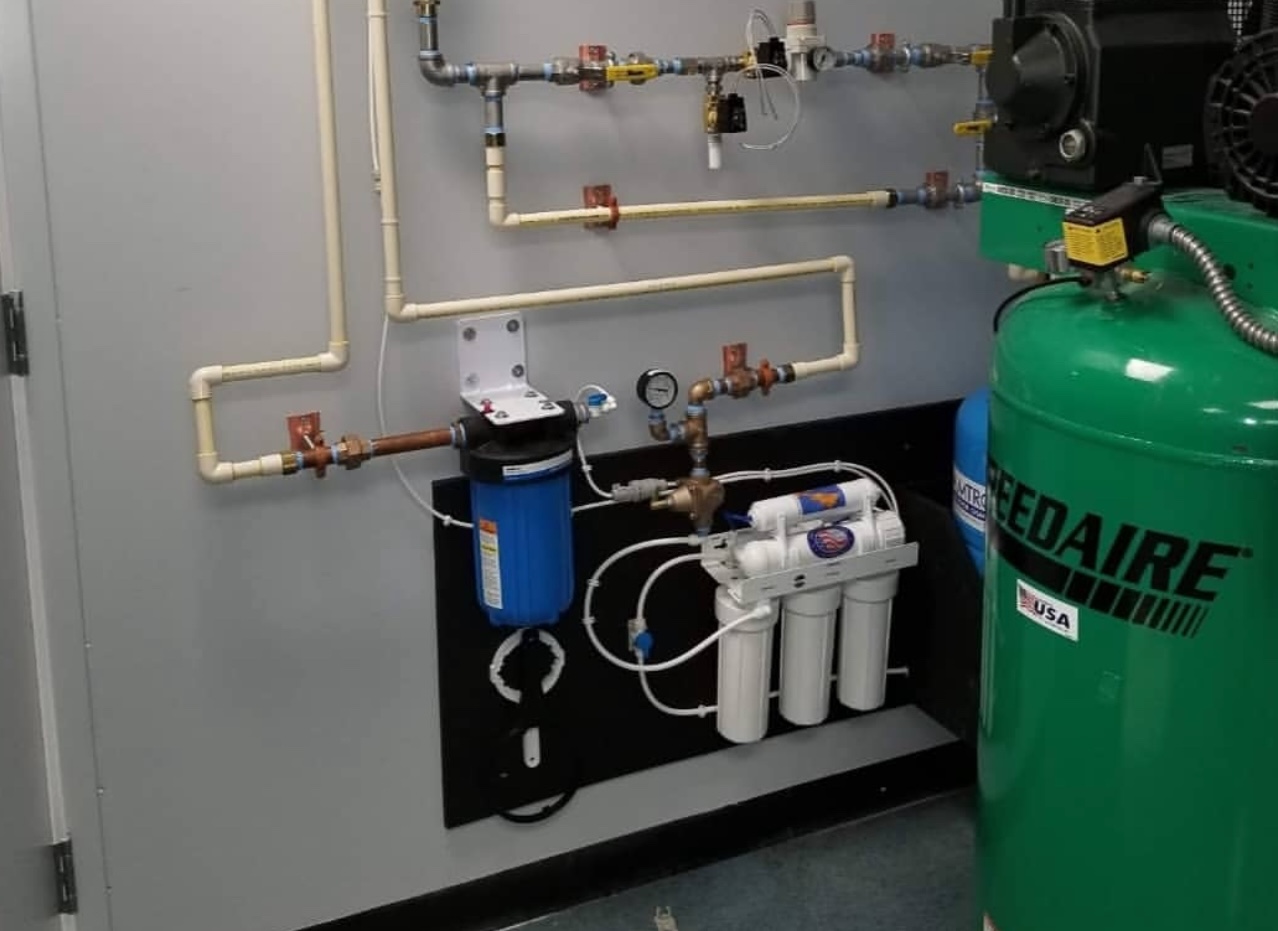Clean, safe drinking water is a necessity for a household & not just a luxury. There are many water filtration options available; choosing one for your home can become overwhelming & a headache if the one chosen isn’t adequate for the home.
Two popular systems stand out: Reverse Osmosis & Carbon Filters. While both promise to purify your tap water & protect your family’s health, their methods, benefits, & effectiveness differ significantly.

We'll explore the differences between reverse osmosis systems & carbon filtration, comparing their strengths, limitations, & use cases. By the end, you'll have a clear understanding of which system is best suited to deliver fresh, pure water right in your home. Let’s jump in!
Reverse osmosis is a purification process that uses pressure to push water through a semi-permeable membrane, filtering out contaminants like salts, heavy metals, & microscopic impurities. The filtering of all these items is marvelous, providing clean water to a home; the quality of the build makes a difference for water quality.
Unlike carbon filters, which mainly remove chlorine, odors, & other organic compounds by absorption, reverse osmosis goes beyond by physically separating water molecules from dissolved solids; this makes reverse osmosis one of the most thorough filtration methods, producing essentially pure water.
However, it also tends to use some water during the process. Since the system flushes away concentrated contaminants. Every gallon of purified water, a few gallons may be discarded, unlike carbon filters, which don’t produce wastewater. Also, RO systems tend to be more sophsicated & require more maintenance than carbon filters whilst affected by water pressure.
Newer models of reverse osmosis filters have a lower wastewater ratio than older models. It’s important to get a high-quality model that is installed with professional care.
Carbon filters play a role in water purification, especially when it comes to everyday taste, odor, & contaminant control. By trapping chlorine, sediment, & volatile organic compounds, they make water more refreshing & pleasant to drink—often serving as the first line of defense in home & commercial filtration systems.
Their effectiveness at improving flavor is why they’re widely used in pitchers, faucets, & refrigerators. Carbon filters are more durable than RO systems because they’re built with simpler materials, with fewer or zero hassle items included as compared to RO systems.
However, carbon filters have limitations; they cannot fully remove dissolved salts, heavy metals, or microscopic impurities.
That’s where reverse osmosis comes in, using a semipermeable membrane to achieve a much deeper purification. Together, carbon filters enhance water’s quality & palatability, while reverse osmosis ensures maximum safety, creating a powerful one-two combination for cleaner, healthier water.
Want to better understand how water treatment works in NJ homes? Download our Free Water Treatment Guide —it breaks down the basics of water quality, common contaminants, and how treatment systems help protect your home’s plumbing. 👉[Download Free Guide].

Plumbers install, service, & maintain both carbon filters & reverse osmosis (RO) systems. For carbon filters, this can mean setting up under-sink units, changing cartridges, or integrating whole-house filtration systems into the main water line.
With reverse osmosis, plumbers typically install the multi-stage system (including the carbon pre-filter, RO membrane, storage tank, & post-filter), ensure proper water pressure, & handle any drain line connections. They also troubleshoot issues like leaks, reduced flow, or filter replacement schedules to keep systems performing at their best.

Still wondering which is better? It’s possible to use both! Carbon filters serve as pre-treatment, removing chlorine & organics that would degrade the RO membrane, while post-carbon polishing enhances taste after desalination. This dual-stage approach not only extends membrane life & reduces maintenance but also delivers water that is chemically pure & sensory-pleasing.
Choosing between carbon filters & reverse osmosis depends on your water quality & maintenance goals. If your main concern is taste, odor, & everyday contaminants & you want a low-maintenance solution—carbon filters are often the better fit.
However, if your water supply has high levels of dissolved solids, heavy metals, or nitrates, reverse osmosis provides superior purification, though it requires more upkeep. For the best of both worlds, many homeowners combine the two systems for clean, great-tasting, & safe water. Ready to enjoy cleaner, better-tasting water at home? Contact Water Flow Plumbing & Heating today to schedule your water test and discover which filtration system fits your needs best.
References
Affordable Water Inc. (2025, August 8). Reverse Osmosis Maintenance Tips for First-Time Owners. https://www.affordablewaterinc.com/reverse-osmosis-maintenance-tips-for-first-time-owners
Miller, A. (2024, August 6). What Does a Carbon Filter Remove From Water? ITEHIL. https://itehil.com/blogs/outdoor-life/what-does-a-carbon-filter-remove-from-water
Aquasana. (n.d.) Reverse Osmosis vs. Carbon Filtration: Which Is Best for Your Home? https://www.aquasana.com/info/reverse-osmosis-selective-filtration
Reach out today or browse our services to see how we can support your home or project.
